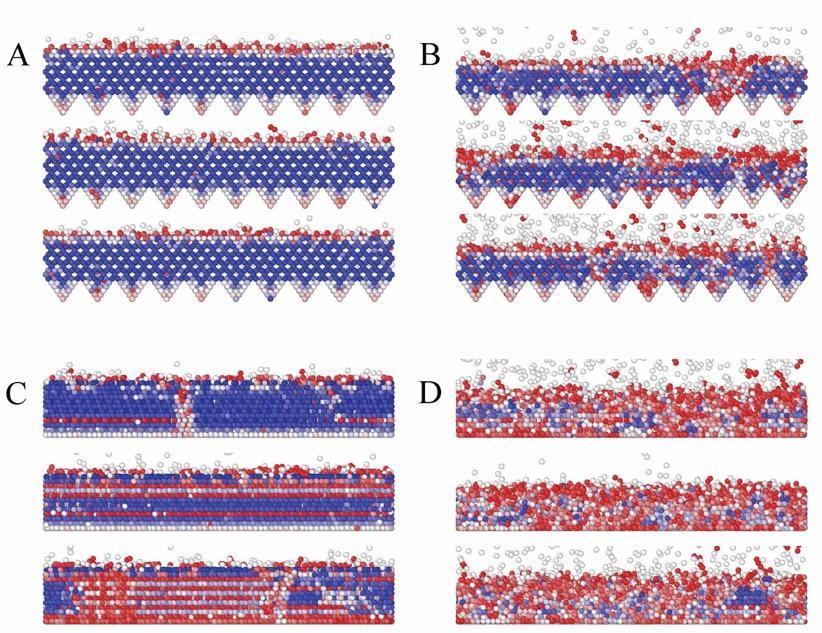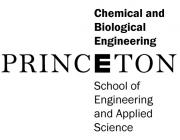We are interested in the basic mechanisms of self-assembly in nanoparticle systems under both equilibrium and non-equilibrium conditions. We are determining the influence of interactions on the thermodynamics and kinetics of nanoparticle crystal phases, with special interest in open structures. As an example of non-equilibrium self-assembly, we have recently used molecular dynamics simulations of the epitaxial growth of high quality crystalline films for photonics applications from triblock Janus colloids. With a featureless substrate, the film morphologies had two stacking polymorphs appearing in nearly equal proportion. However, with a patterned substrate deliberately designed to be easy to fabricate by standard photolithography techniques, both grain size and selectivity towards the photonically active polymorph were greatly improved. Lower particle flux led to higher quality crystals, while higher flux led to frustrated films with smaller crystalline domains – see figure below.

Figure from Reinhart and Panagiotopoulos, J. Chem. Phys. 150: 014504 (2019), shows snapshots from the lowest and highest flux simulations for patterned (A and B) and flat (C and D) substrates.

